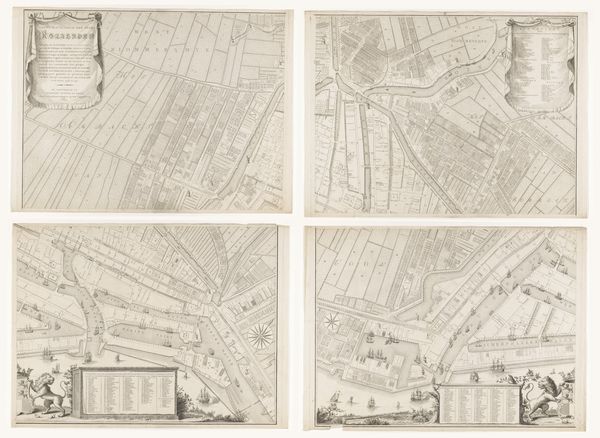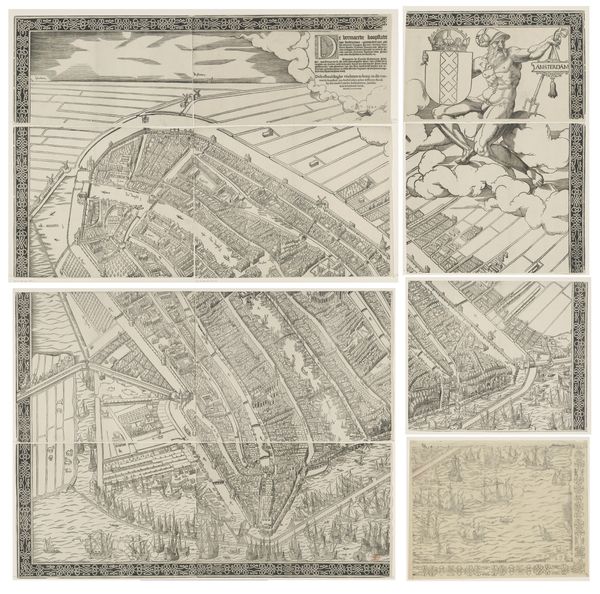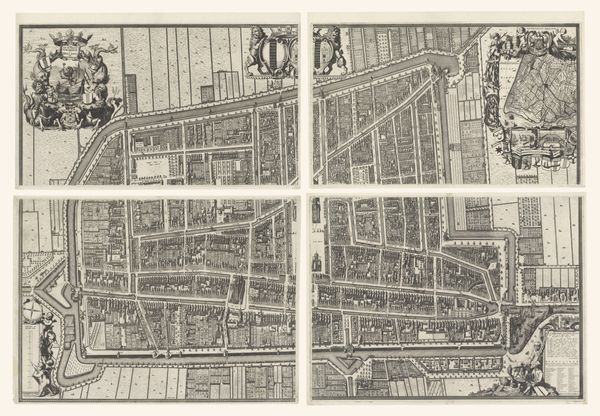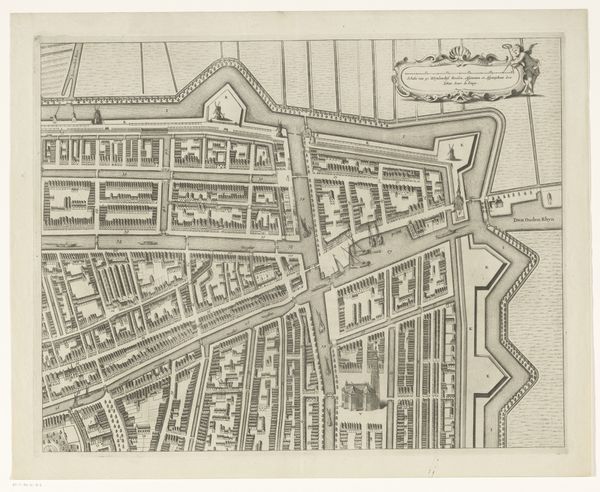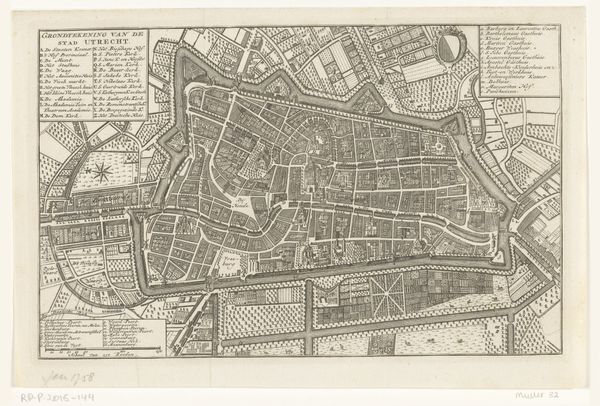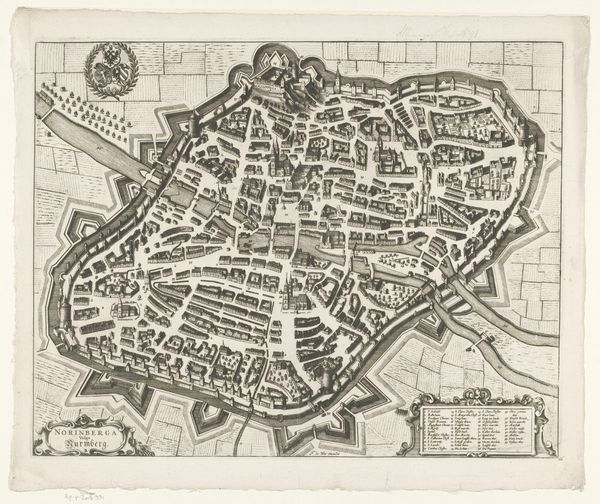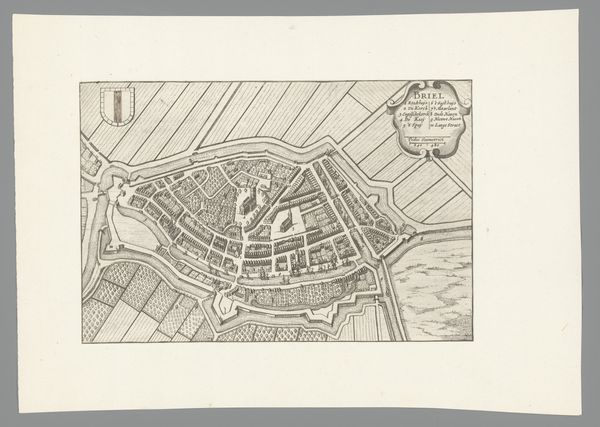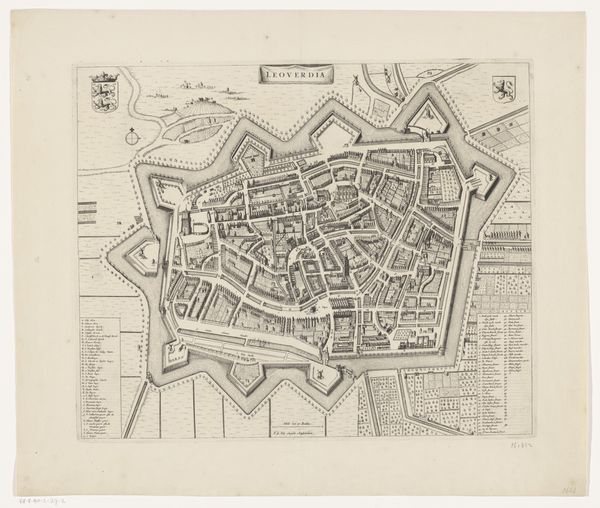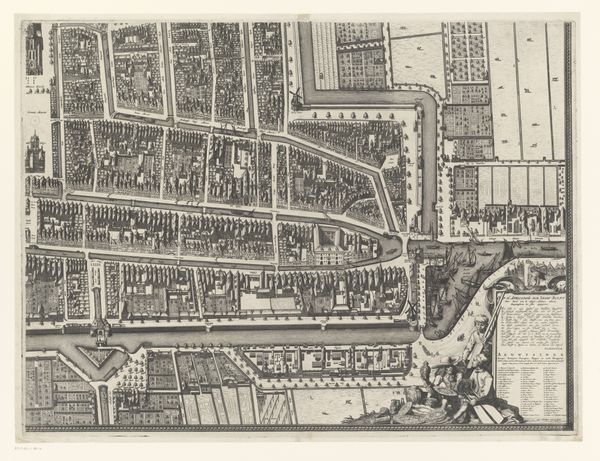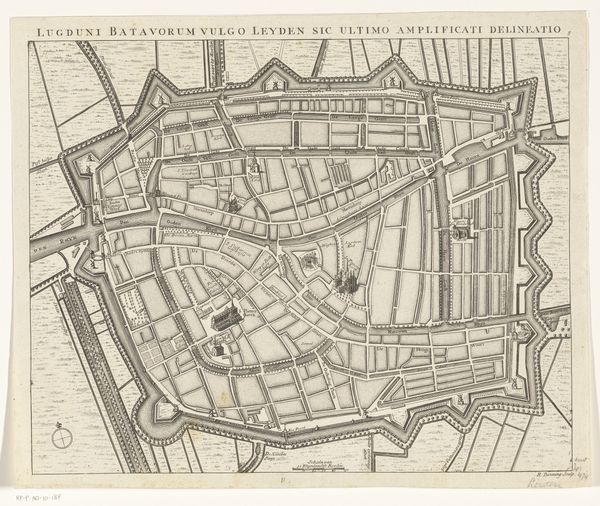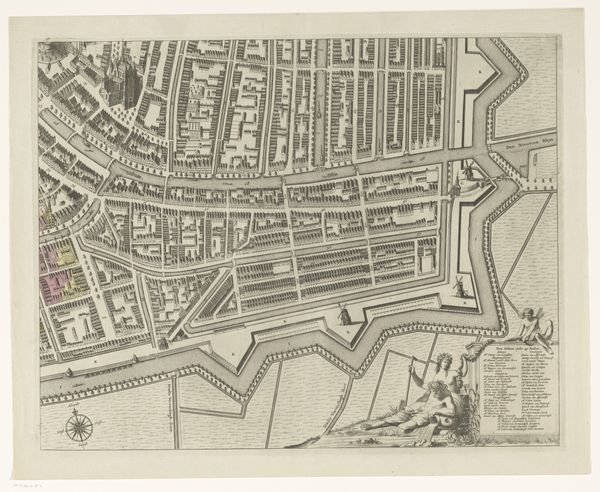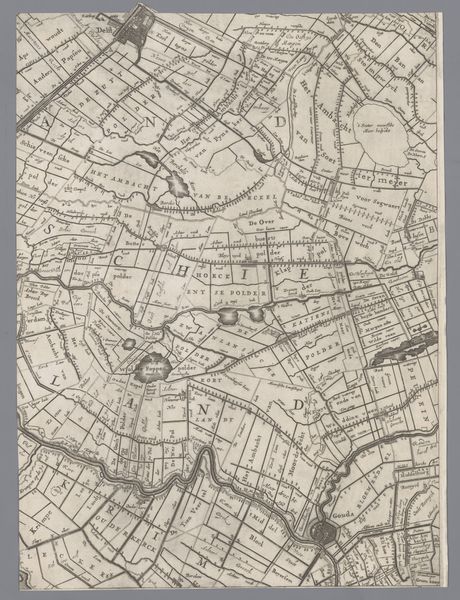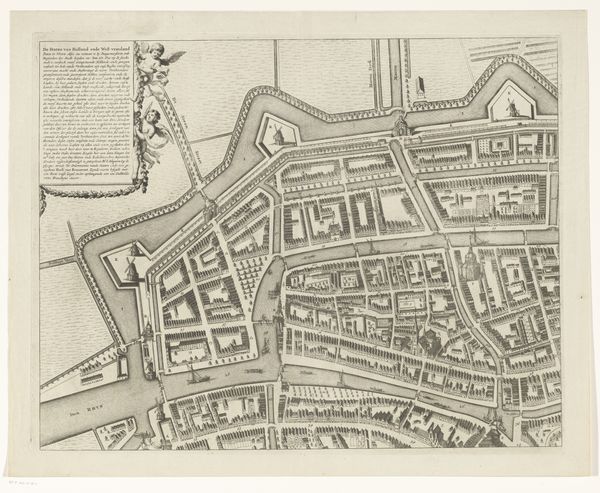
print, ink, engraving
#
baroque
# print
#
old engraving style
#
ink line art
#
ink
#
line
#
pen work
#
cityscape
#
engraving
Dimensions: height 952 mm, width 1203 mm
Copyright: Rijks Museum: Open Domain
Editor: This is an intriguing piece—a plan of Leiden in four parts, made after 1675 by Christiaan Hagen, rendered as a print using engraving and ink. It reminds me of something that would be consulted more as a technical document than a work of art, though its creation must have taken artistry and precision. How do we approach a piece like this as art, and what can you tell me about it? Curator: From a materialist perspective, consider the engraving process. The creation of multiple identical images democratized access to information about Leiden, shifting the control of knowledge. The physical act of engraving – the labor involved – directly shaped the accessibility and distribution of this urban representation. What was previously privileged knowledge becomes more available, influencing societal perceptions of the city itself. Editor: So, the medium itself influences society...like early "open source" data visualization? Curator: Precisely. And look closely: The fortifications, clearly delineated, speak volumes about power structures and anxieties regarding security and trade. The layout wasn't merely representational; it actively participated in constructing and reinforcing those power dynamics, even at the expense of some aesthetic nuance. How do you think the choice of materials, the ink, the paper, relate to its purpose? Editor: Well, they must have been relatively affordable and durable if many copies were meant to be circulated...it was more utilitarian than decorative, but maybe this in itself has beauty. I can better appreciate this work after reflecting on how material access can be its own form of statement. Curator: Indeed. By tracing the means of production and consumption, we unearth deeper layers of meaning and societal influence. These considerations expand what is traditionally conceived as "art," pushing its borders beyond surface appearance.
Comments
No comments
Be the first to comment and join the conversation on the ultimate creative platform.
